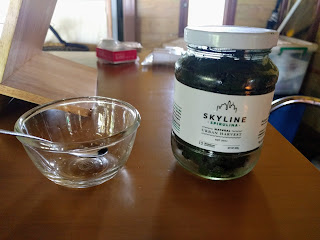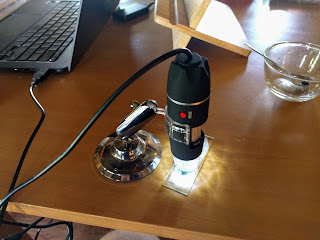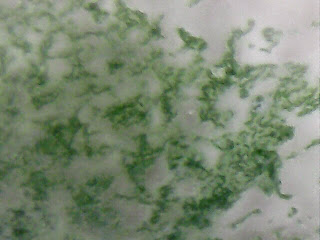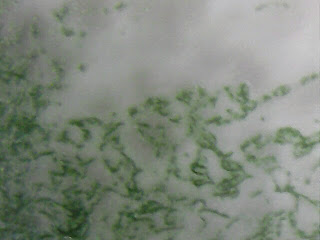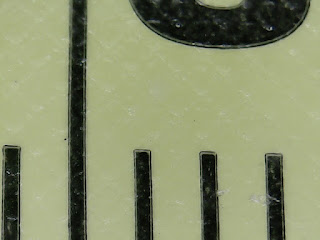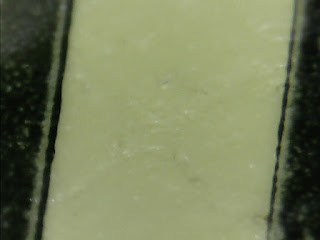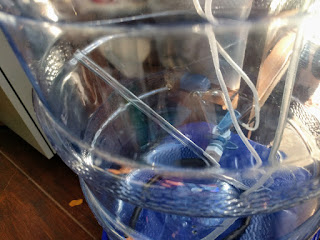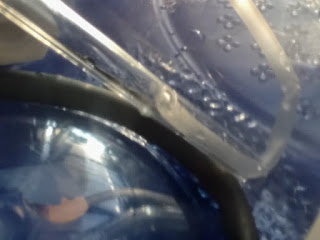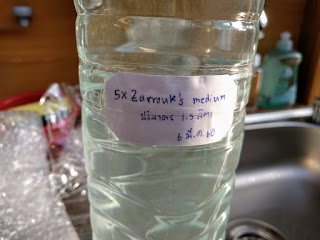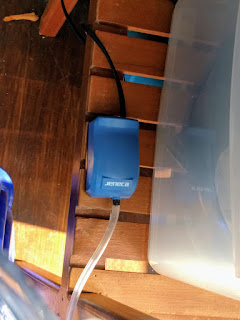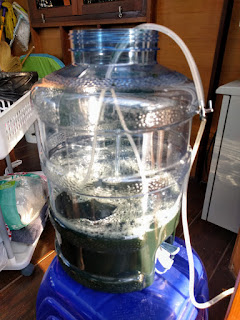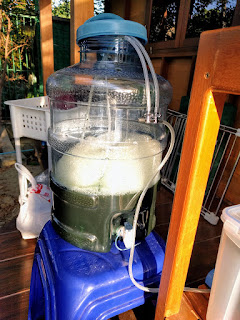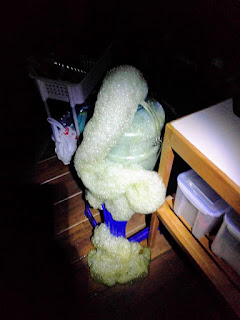I have been eating the Skyline brand fresh spirulina paste grown on rooftops here in Bangkok for some time now, and the flavor is quite delicious compared to the dried powders you can find around.
So I started out by seeing what it looked like under a microscope. This involved buying a cheap microscope off of Lazada. It cost a little more than 600 THB (less than $20) and worked right out of the box on Linux. (It uses that standard UVC camera driver.)
So I asked someone to swing by the shops around the university and pick me up some glass slides and cover glass and took a look. (Whoever knew that those microscope lab experiments in high school biology classes would come in handy some day?)
The microscope doesn’t use a backlight the way any real scientific microscope would (hey, it was less than $20 and it works, so don’t knock it), so I just put a piece of white paper on the back to help as a backdrop for the microscope view as well as reflect the light from the LED’s back up through the spirulina.
Here is what it looked like:
These images aren’t exactly what pictures of spirulina under a microscope look like on the web. But particularly if you look at the last one, you can see spiral structures.
The microscope says it does “50x” and “500x” but I had a strong suspicion that this doesn’t mean anything on a cheap device like this. (The size of the CMOS sensor alone makes the magnification somewhat irrelevant.) So to make sure I was looking at the right magnification, I looked at a millimeter scale on a tape measure to see what the width of the field-of-view is on this device.
At the 50x setting, you can see just about 5mm:
At the 500x setting you can see almost exactly 1mm:
So the first amusing thing is that the “50x” and “500x” magnifications aren’t even 10x different in scale. :-
So now that I know the field-of-view of the images, I was able to “measure” the size of the loose spiral structures in what I was seeing on the slide by counting pixels.
According to a FAO PDF about spirulina I found, the cells themselves are between 1 and 10 microns, and the filament structures that spiral (called trichomes) are usually around 100-200 microns.
Based on that last image above, I measured the loose spiral like shapes as having a filament width (cell size?) of about 6 pixels, which comes out to about 9 microns. The length of one of the loosely coiled filaments was about 60 pixels, which comes out to about 90 microns. So this is certainly consistent with the scale of a spirulina trichome.
A quick search on why they aren’t coiled as nicely as the pictures on the internet suggests that this is due to them breaking down (lysing) due to some kind of stress. (Often this is due to too much sunlight, but given that it was being stored in my refrigerator, that may not be the cause here.) My guess is that the packaging, distribution, and storing process is stressful to the spirulina.
But I went ahead and tried to culture it anyway.
My initial setup involves a mostly transparent plastic container with about 20L capacity, an air pump, an air diffuser, and the plastic tubing to connect the air pump to the diffuser. Additionally, I experimented with a glass tube that could be used for harvesting the spirulina later, but I’ll get to that once we confirm that I can actually grow the spirulina culture.
Here is a picture of the diffuser inside the container:
I ran the tube up to a bivalve so I can switch the air between the diffuser and the glass tube:
Here is a picture with the glass tube dropped in:
You can see that plastic air tube simply rests inside the glass tube. The air bubbles moving up will bring some water with them, so if you attach a cheese cloth or some other kind of simple filter, then the spirulina should be collecting inside.
I then took the Zarrouf’s medium that I got at 5x strength and dumped it in the container:
Since it was 5x strength, I added 4 more of these bottles of filtered and UV sterilized water.
Then I turned on the small air pump, both to make sure everything was working and to use the agitation that the air bubbles created to help mix the water and solution together.
Finally, I measured out a dollop of the spirulina paste:
I had no idea how much to start with, so I just tried 50g.
I mixed the paste with a little bit of water to make an aqueous solution and then mixed it into the culture medium:
It came out a lot darker than I was intending. Note to self for next time: 50g of fresh spirulina paste is way too much for this amount of culture medium.
The other thing of interest was how it started frothing almost immediately:
When I checked on it again after nightfall, it had completely frothed over:
So I reduced the agitation a bit. And eventually the frothing subsided. (I was able to bring the air pump back to its initial level.) A quick search around the net suggests that the frothing is consistent with the theory that the spirulina had undergone some kind of stress that caused it to lyse prior to my attempt to culture it.
I will try waiting about a week and see if the spirulina looks any better under the microscope.
